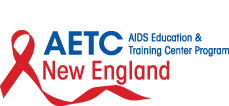.png)
National HIV Testing Day (NHTD) is an annual observance each June 27 to promote HIV testing in the United States. According to the U.S. Centers for Disease Control and Prevention (CDC), about 1.2 million people in the U.S. are currently living with HIV, and about one in eight don’t know that they are infected.
The NHTD theme for 2022 is “HIV Testing Is Self-Care.” According to CDC, “The topic of self-care has been particularly prominent during the COVID-19 pandemic as the need for individual and community actions to protect and promote physical and mental health have been so critical. HIV testing is an act of self-care, and knowledge of status is the gateway to engaging in prevention or treatment services that enable individuals, regardless of their status, to live a long and healthy life.”
To help you, your patients or clients, and at-risk communities prepare for and mark the day, we’ve compiled an annotated list of resources focusing on HIV testing. For additional information on this topic, you can also visit NEAETC’s Online HIV Resource Library page focusing on HIV Testing.
Web Pages, Fact Sheets, and Resources
National HIV Testing Day (HIV.gov) – This resource page for NHTD includes a variety of materials to help organizations raise awareness about HIV testing, and to encourage everyone between the ages of 13 and 64 to get tested for HIV at least once as part of routine health care.
HIV Testing 101 (CDC) – This is an easy-to-read fact sheet in question-and-answer (Q&A) format. The first page is in English, and the second page is in Spanish.
HIV Testing (CDC) – This web page divides HIV testing information into several topic categories with answers to common questions about HIV testing in plain language. The topics covered are: getting tested, types of HIV tests, find an HIV test, HIV self-testing (home testing), understanding a negative result, understanding a positive result, sharing your test result, and download HIV testing materials. Also available in Spanish.
HIV Testing (HIVinfo) – This fact sheet covers what HIV testing is, why it is important, who should be tested, where to get testing, the types of HIV tests, and confidentiality in HIV testing. Also available in Spanish.
HIV Testing (The Well Project) – This fact sheet provides basic information about HIV testing in Q&A format, as well as links to many other testing resources.
HIV Testing (Avert/Be in the Know) – This webpage links to information about why, when, and how to get tested for HIV, home testing and self testing, what happens after people receive HIV test results, and personal stories about HIV testing.
HIV Testing in the United States (Kaiser Family Foundation) – This issue brief includes sections with important dates in HIV testing history, testing statistics broken down by race/ethnicity, U.S. testing recommendations and requirements, insurance coverage of HIV testing, testing sites and policies, testing techniques, and what happens after someone receives a positive HIV test result.
GetTested: National HIV, STD, and Hepatitis Testing (CDC) – This webpage includes answers to frequently asked questions about HIV, STD, and hepatitis testing, as well as a search feature to help people find nearby testing sites, providers of pre-exposure prophylaxis (PrEP), and organizations that provide condoms for free or low cost.
Let’s Stop HIV Together (CDC) – This webpage for CDC’s Let’s Stop HIV Together campaign has many materials related to HIV testing, including support for couples to discuss getting tested together and for people to do self-testing if they are most comfortable with that option. The site also has links to banners, brochures, fact sheets, palm cards, posters, and videos to promote HIV testing. Also available in Spanish.
HIV Testing Guidelines and Recommendations
HIV Guidelines and Related Resources: HIV Testing (CDC) – This web page has links to many resources, including guidelines for HIV testing in clinical and nonclinical settings, HIV laboratory testing and reporting of test results, and HIV testing of organ donors.
HIV Self Testing Guidance (CDC) – In a “Dear Colleague” letter, CDC officials provided guidance to HIV providers regarding the use of HIV self-testing during the COVID-19 pandemic – a time when many face-to-face interactions with patients/clients have been disrupted.
Screening in Clinical Settings (CDC) – This web page provides information and resources for providers and the public on HIV testing in clinical settings.
HIV Testing in Nonclinical Settings (CDC) – This web page provides information and resources for providers and the public on HIV testing in nonclinical settings.
Recent Reports from CDC’s Morbidity and Mortality Weekly Report That Include Information on HIV Testing
HIV Testing Trends Among Persons with Commercial Insurance or Medicaid – United States, 2014-2019

